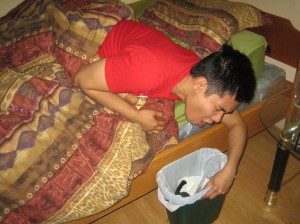Fact Checked
Overview Of Bed Sores
- Pressure ulcers are wounds that crack the skin and core tissue. They are caused when a part of skin is placed under pressure.
- They are occasionally known as “pressure sores” or “bedsores”.
- Pressure ulcers can differ in severity from blotches of bruised skin to open lesions that bare the underlying tissue or muscle.

Pressure ulcers are wounds that cracks the skin and core tissue. They are caused when a part of skin is put under pressure.
How Do Bed Sores / Pressure Ulcers Occur?
- Pressure ulcers can advance when a large amount of force is applied to a region of skin.
- They can also occur when less force is applied over a longer period of time.
- The additional force disturbs the flow of blood to the skin. Without proper blood supply, the skin becomes starved from the much needed nutrients it requires, and starts to break down, resulting in ulcers.
- Pressure ulcers are inclined to affect individuals with health disorders that make it hard to move, particularly those restricted to laying in a bed for extended periods of time.
- Disorders that affect the blood flow, such as diabetes type 2, can also make a individual more susceptible to pressure ulcers.
People Who Are Affected
- This is generally individuals with an underlying health disorder.
- Individuals over the age of 70 years are predominantly susceptible to pressure ulcers, as they are more prone to have movement issues and ageing skin.
How To Treat And Prevent Pressure Ulcers
- Treating pressure ulcers includes using bandages, ointments and gels intended to hasten the healing process and relieve pressure.
- Surgery is occasionally recommended for the most severe cases.
- For some individuals, pressure ulcers are an embarrassment that needs minor care.
- For other people, they can be severe and lead to severe complications, such as gangrene.
Pressure ulcers can be nasty, distressing and challenging to treat. As a result, a range of methods is used to stop them occurring. These consist of:
- Frequently changing an individual’s position.
- Using things to protect exposed parts of the body – such as specifically designed pillows and mattresses.
Related Video Pressure Ulcers